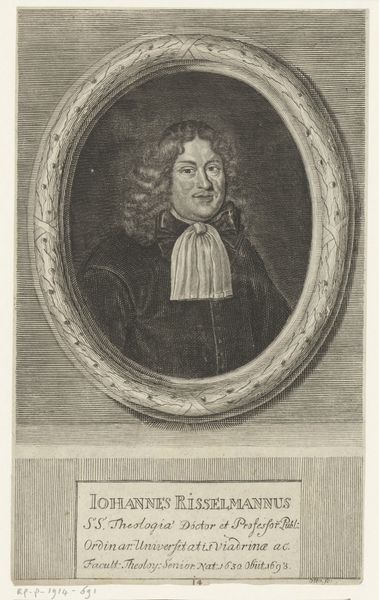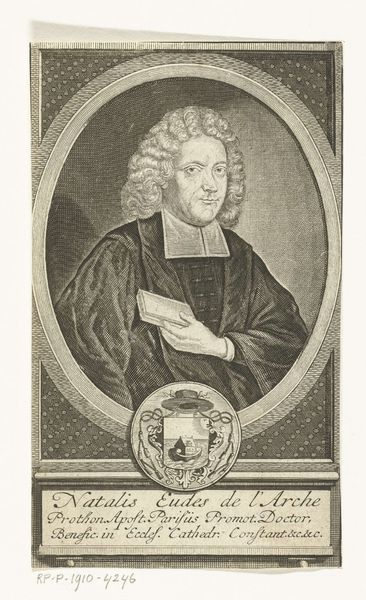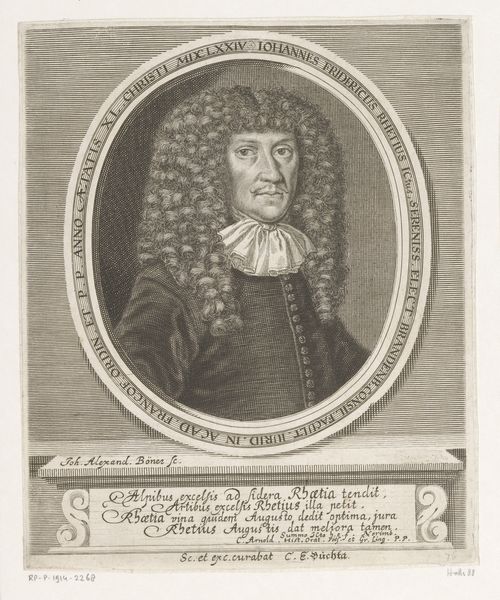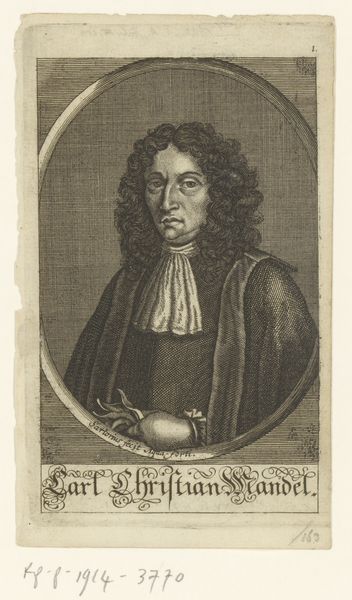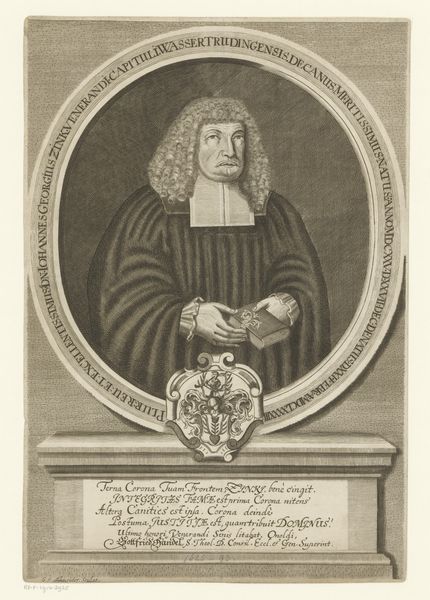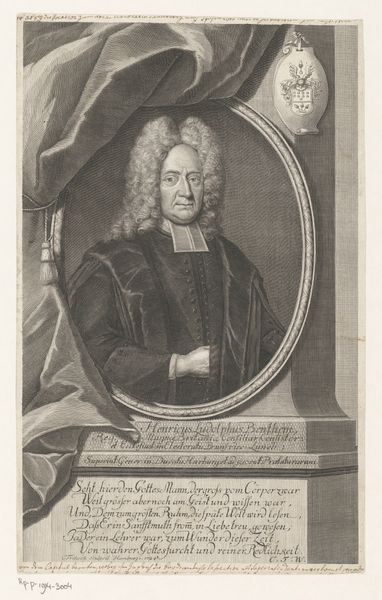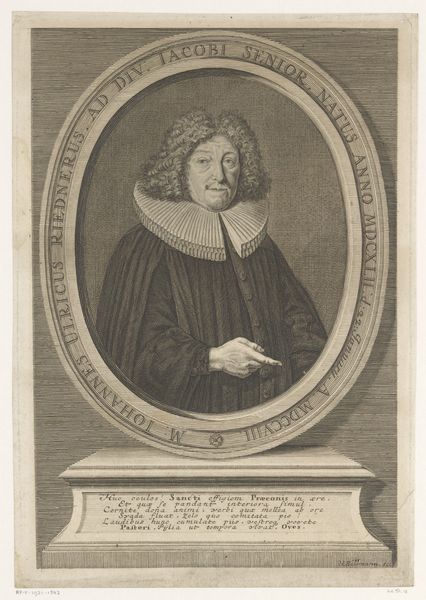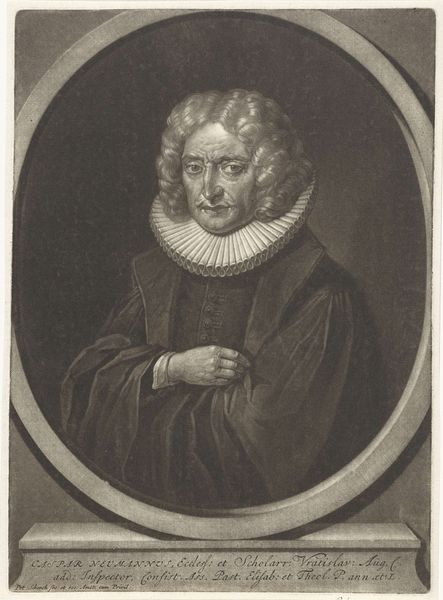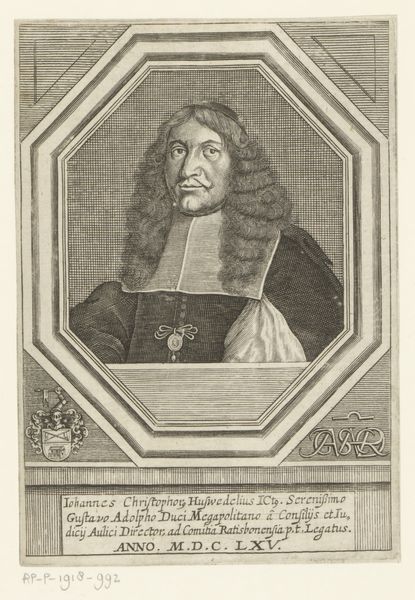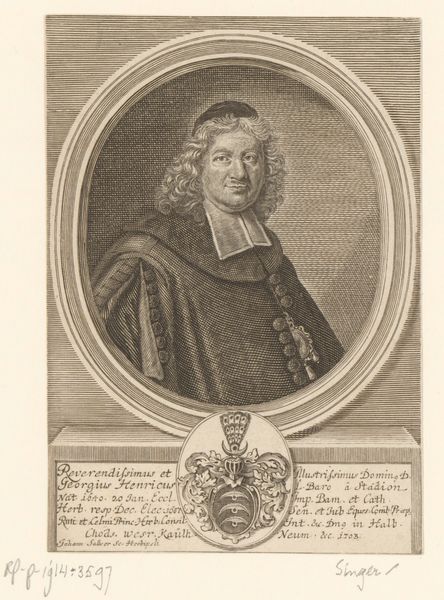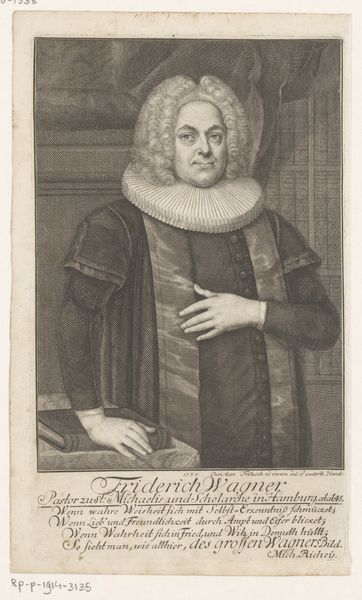
print, metal, engraving
#
portrait
#
baroque
# print
#
metal
#
old engraving style
#
line
#
engraving
Dimensions: height 156 mm, width 100 mm
Copyright: Rijks Museum: Open Domain
Editor: This is "Portret van Gustav Michael Renatus" created between 1680 and 1739, by Johann Christoph Sartorius. It’s a print, using metal and engraving techniques. The tight oval framing and linear details create a really formal and perhaps stuffy atmosphere. What jumps out at you when you look at it? Curator: It's interesting that you call it 'stuffy'. Look closely. While the oval format presents formality, I see the baroque era’s penchant for theatricality in the cascading wig and the very particular inscription. The portrait itself is a carefully constructed symbol of status. Editor: Symbol of status, how so? Is it the clothing? Curator: Precisely! It is, in part, about the visual vocabulary. The wig itself became a symbol of status. But beyond the attire, the inscription serves as a mnemonic device, a permanent declaration. In your studies, you've likely encountered examples where such portraits act almost like a secular icon, preserving the memory, the very essence, of the individual, wouldn’t you agree? Editor: I can see that. It's interesting how this seemingly rigid format was used to project such deliberate messaging, using fashion and inscribed text. Curator: Indeed. It reminds us how portraits, across centuries, function as cultural mirrors, reflecting and shaping societal values and personal aspirations. I see how images echo. The weight of those inherited symbols – wig, dress, format – makes up what the West would come to understand as status. What are your feelings now? Editor: Now I feel like I've decoded the image in front of me, the visual symbols point to societal structure in very intentional ways, which now makes the portrait seem a lot less stuffy and a lot more informative. Thanks for pointing that out. Curator: My pleasure, visual literacy is like an investigation, always enriching the view.
Comments
No comments
Be the first to comment and join the conversation on the ultimate creative platform.

